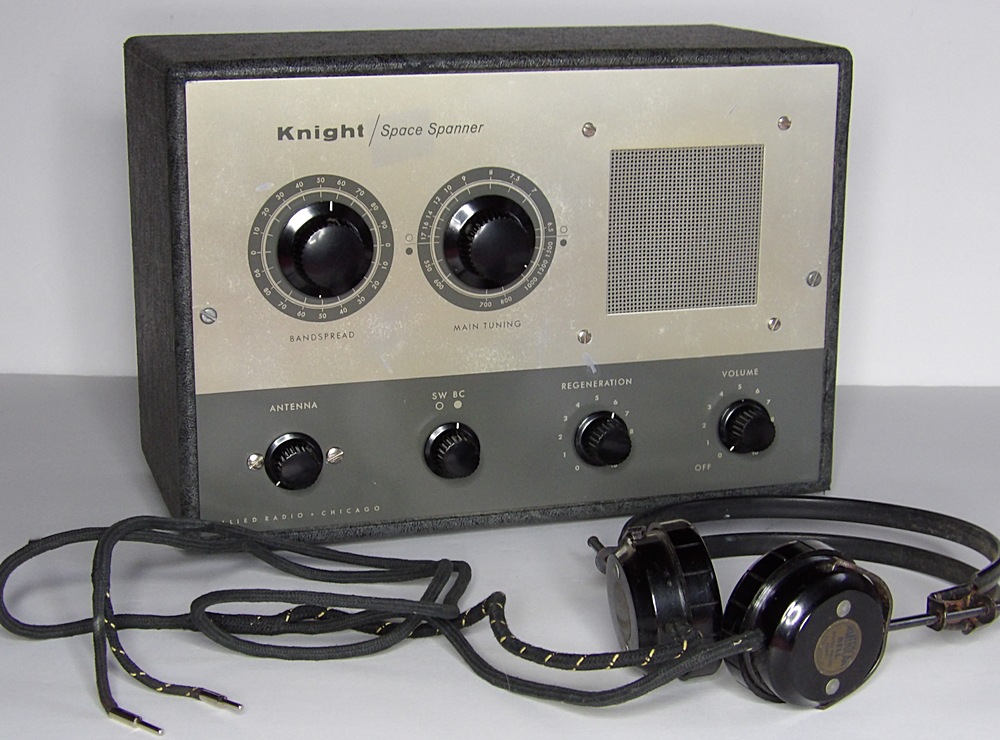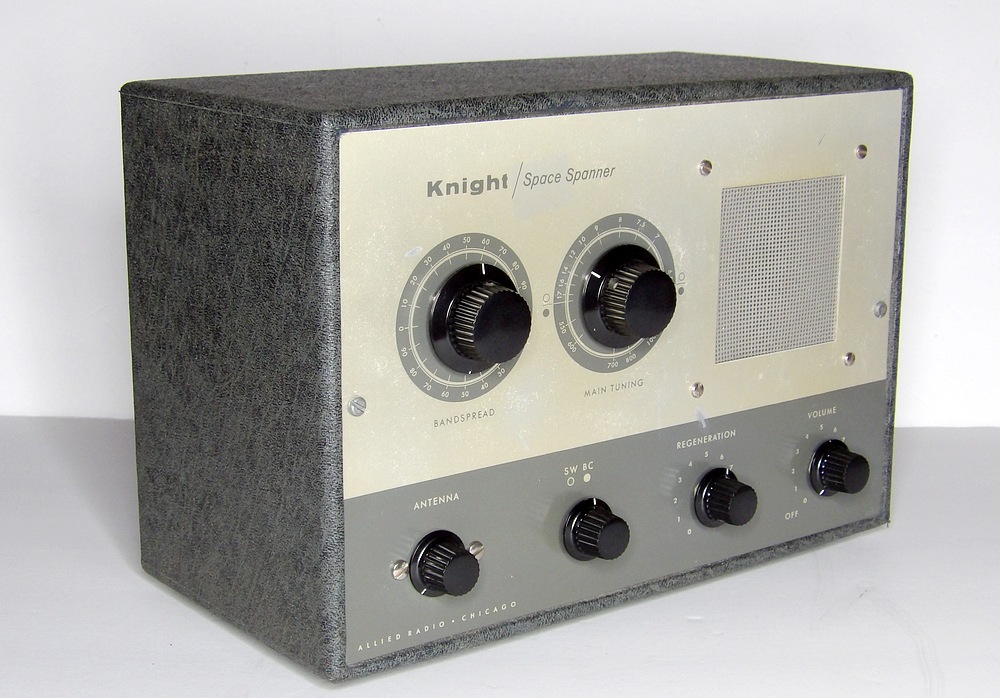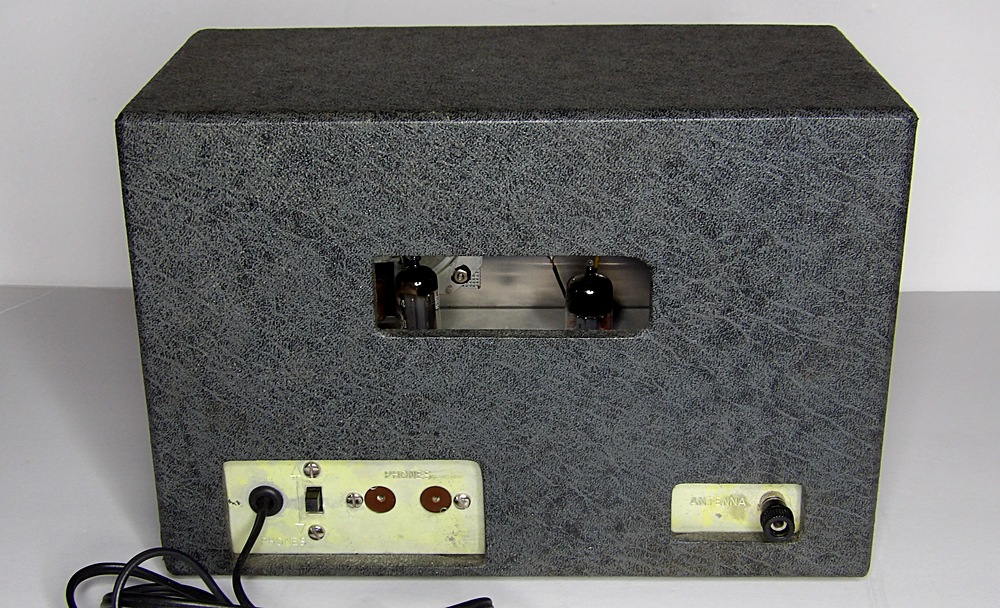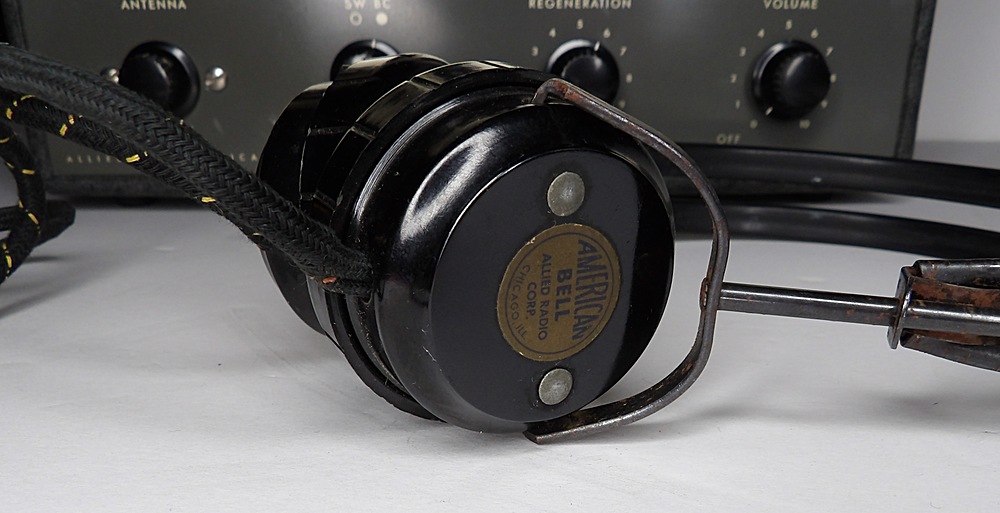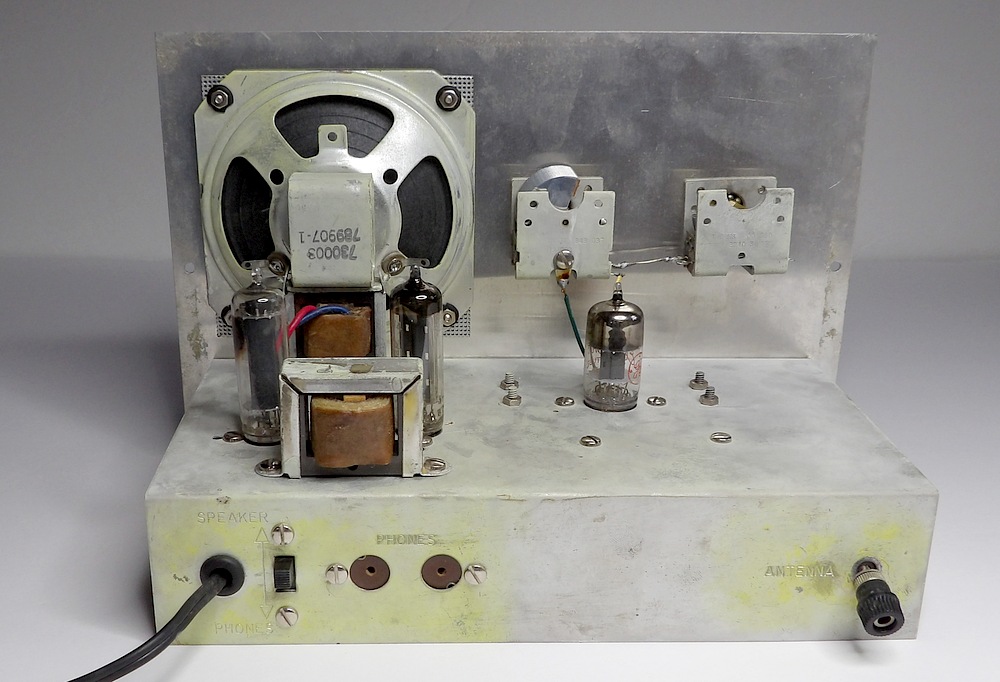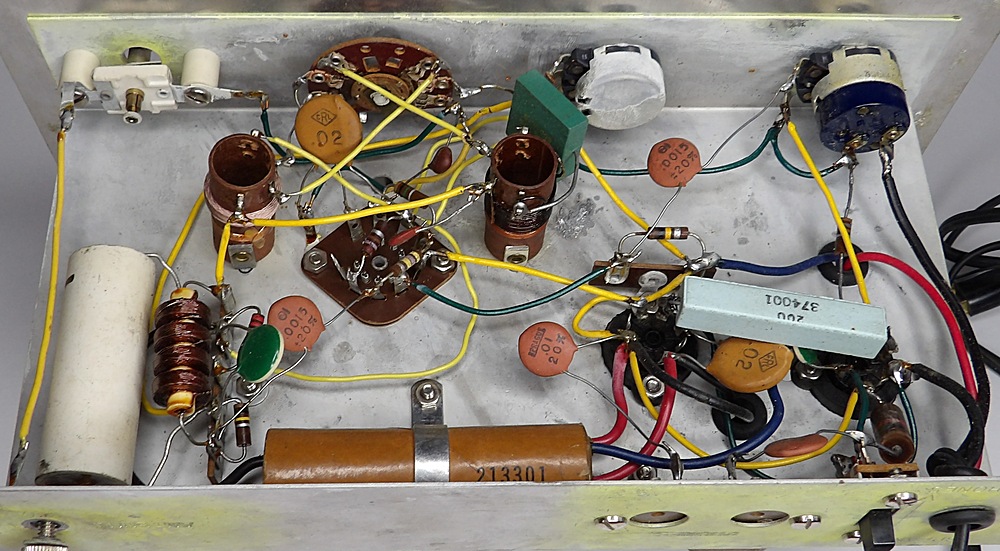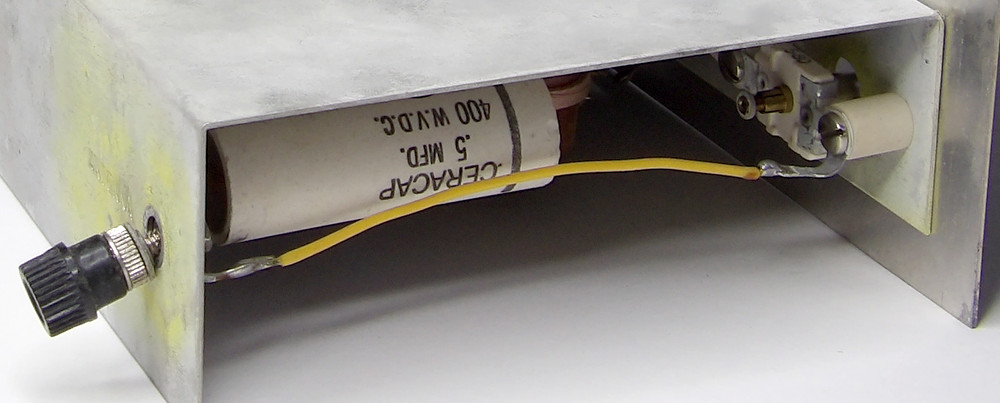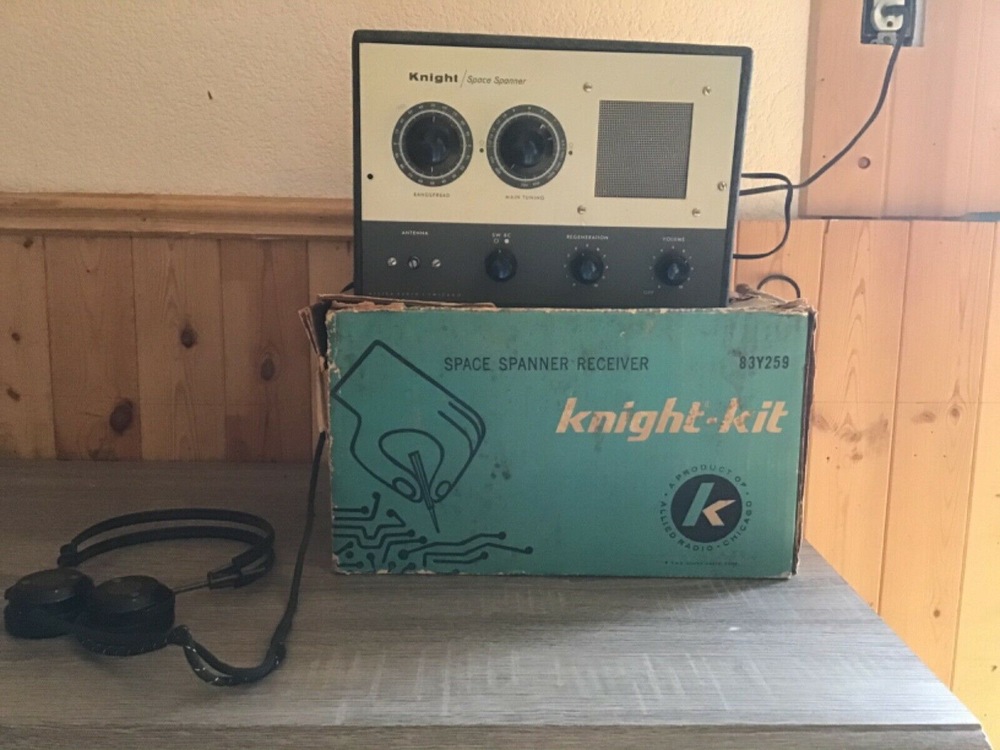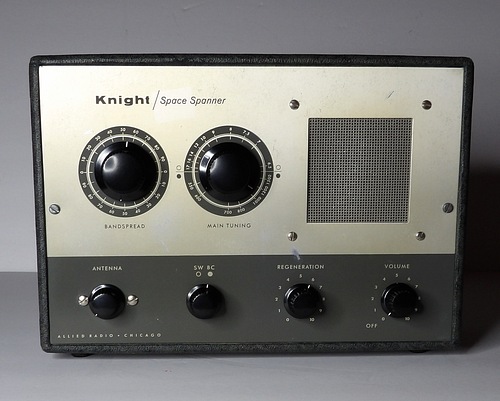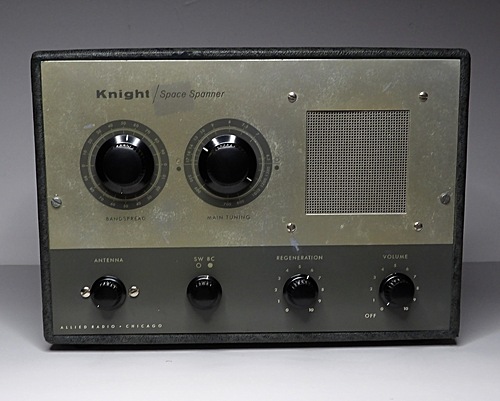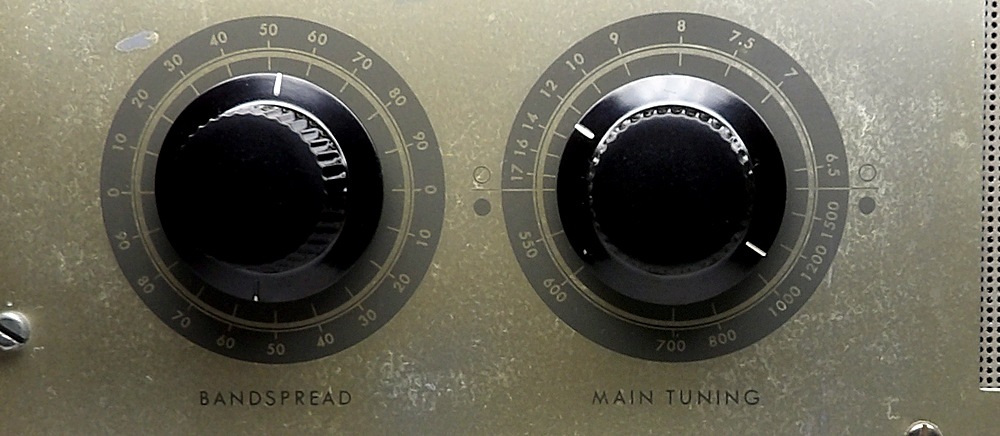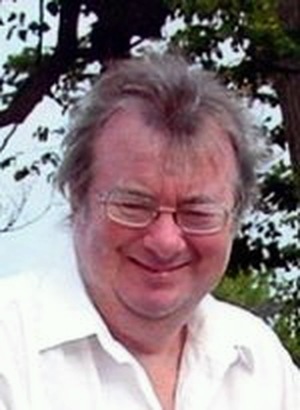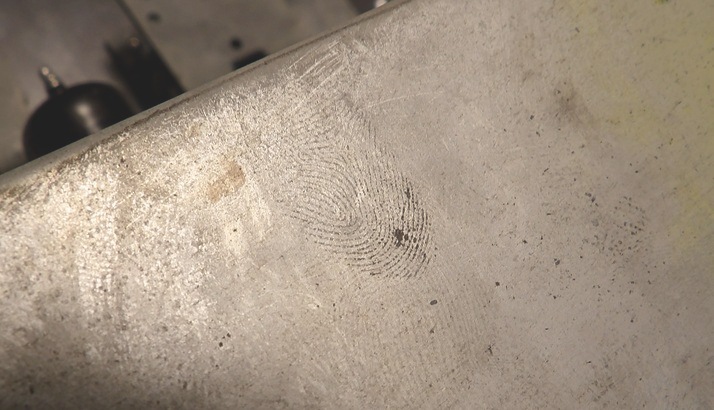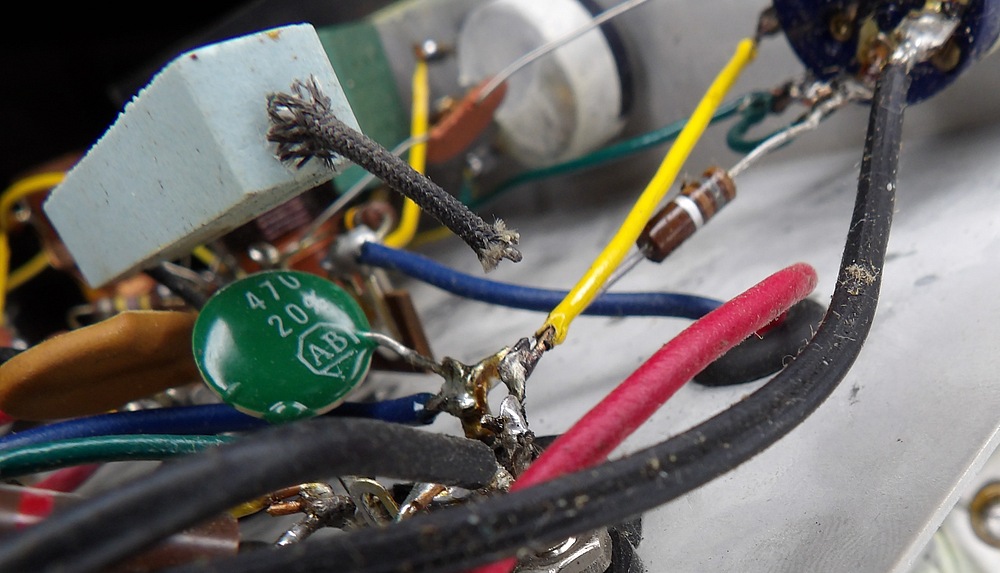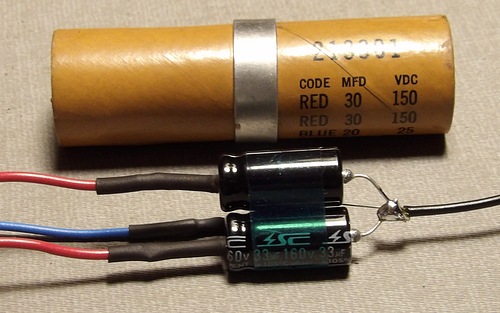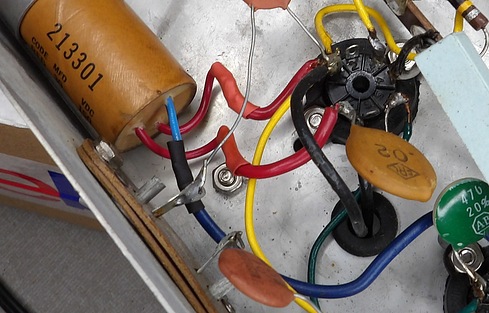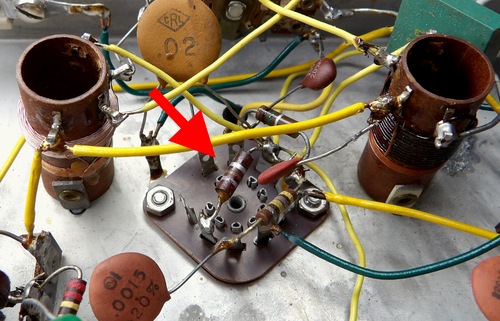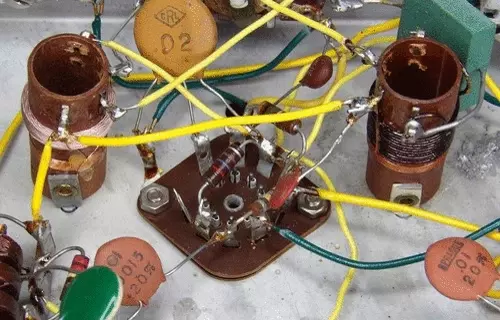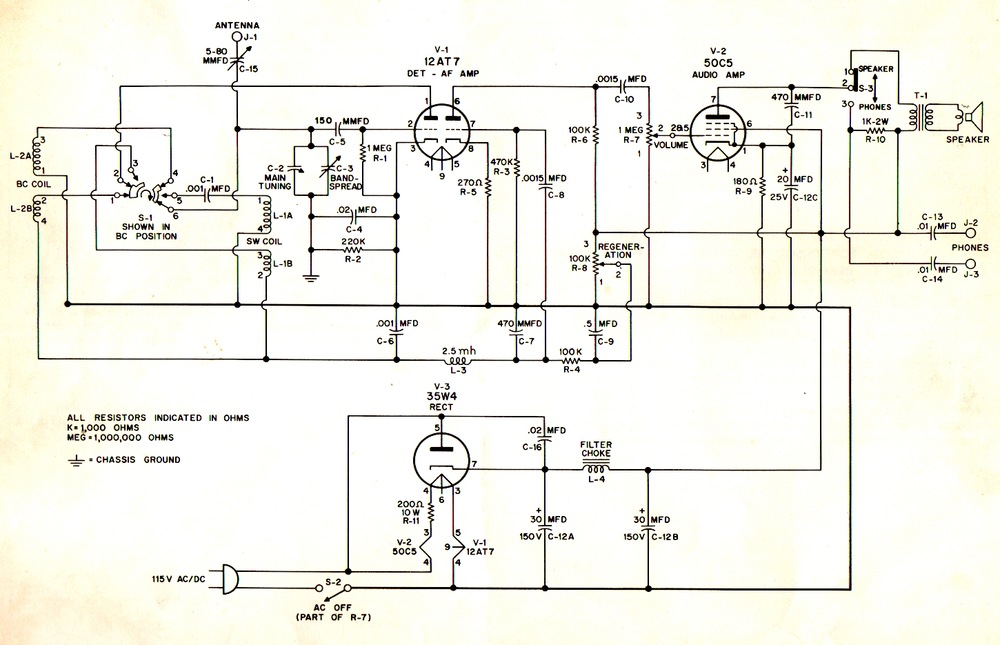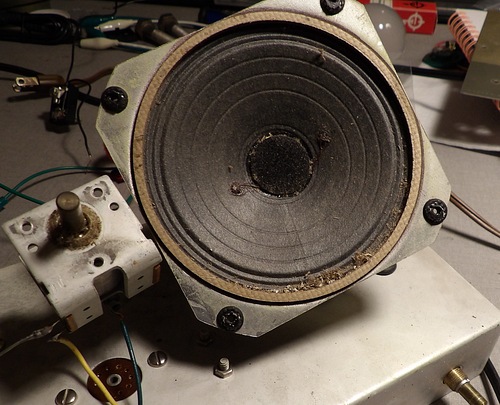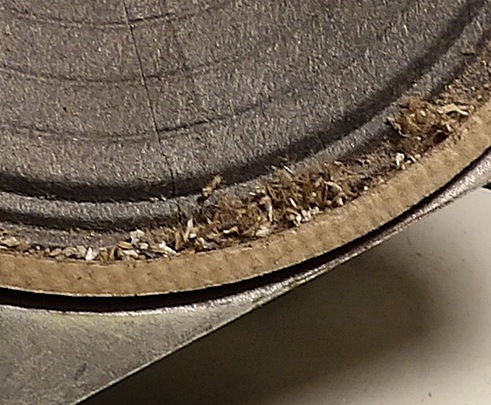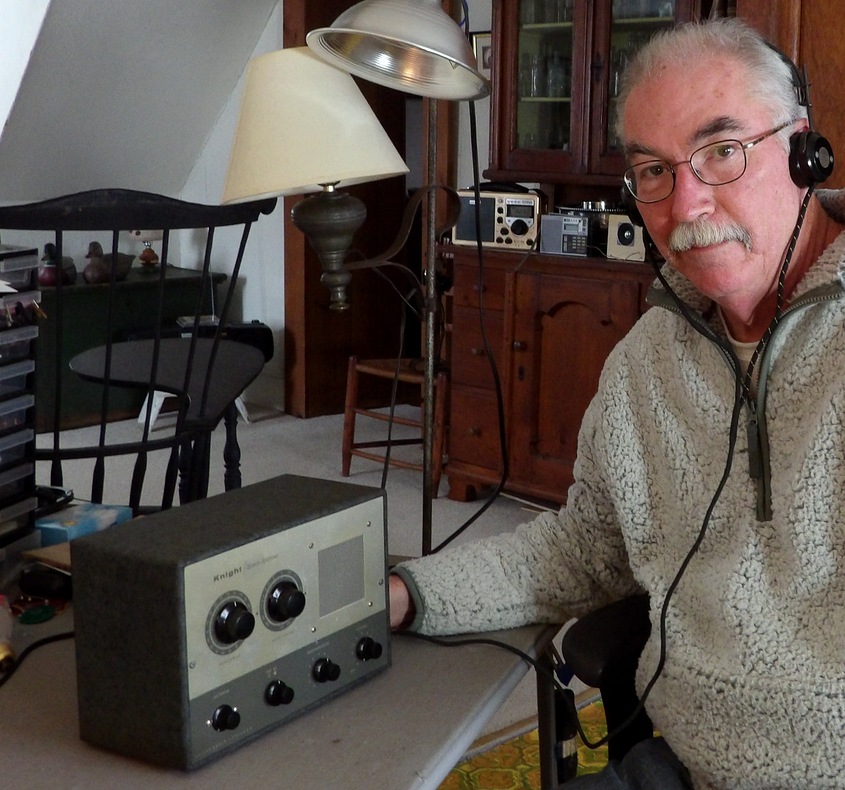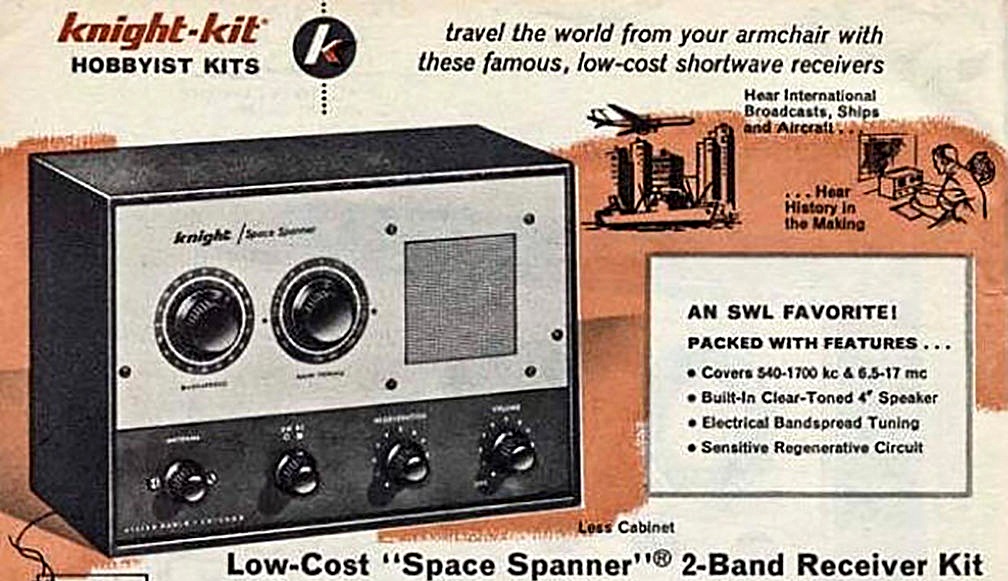|
|
|
|
|
Another Space Spanner! |
|
|
|
|
This Space Spanner was purchased on ebay in
2021 from a woman in Ontario, Canada.
It was built by a kid named Timothy Hodgson sometime between
1959 and 1963. |
|
|
|
|
|
The wooden cabinet looks new! I can't say the
same about the front panel. |
|
|
|
|
|
Rear view. |
|
|
|
|
|
These American Bell headphones
were sold with the kit by Allied Radio. |
|
|
|
|
|
First look at the chassis. |
| The 12AT7 on the right is a GE
made in Canada. The 35W4 in the center is the
original Mullard, and the 50C5 on the left had no
markings on it at all. The green shading on the back
of the chassis shows it spent most of its life in
the wooden cabinet. |
|
|
|
|
|
It's practically identical to the earlier
model. It even has the big "CERACAP" capacitor on the left.
The
"CERACAP"
tested perfectly good, which confirms my suspicion
there was nothing wrong with the one I broke on the other
radio (Page 2). |
|
|
|
|
|
"Headache? Try CERACAP." |
|
|
|
|
|
Here is the photo from the ebay listing. The
radio came with the box, headphones and the original manual.
It appears to be plugged in!
Notice the beautiful front panel. The photo is very
misleading! The front panel looks different under different
lighting. |
|
|
|
|
|
|
This is how the light angle can change the front
panel, and why the ebay photo was less than honest. I had to look at
the ebay photo very intently to make sure it was even the
same radio. The scratch over the word REGENERATION is barely
visible in the ebay photo. |
|
|
|
|
|
|
Sixty years of oxidation! This is how it appeared after
it was cleaned and polished. It looked a lot worse when I first got it. |
|
|
|
|
|
|
So who built this radio? Here's his
picture and his fingerprint. His fingerprints are all over
the radio chassis, burned into the oxidized cadmium plating.
Using some information from the seller and her name from my
PayPal account, I was able to find that the set builder was
named Timothy Hodgson from Westport, Ontario, Canada. Tim's
time on this earth was from October 17, 1953 to May 19,
2016. Since the radio was made between 1959 and 1963, Tim
was TEN YEARS OLD or younger when he built it.
The ebay listing said he was a radio fanatic. In an email
from the seller, Tim's widow, I learned that after he died
she threw all his radios into a dumpster, except this one.
In her own words, "He loved his radios! Sadly, I threw at
least 8 into the dumpster, all in excellent condition. Some
were huge and I remember him talking to a man in Russia on
one of them."
She kept this one because it was light and had a box, but
finally decided to get rid of it to "make room." She shipped
the radio with no packing in the box. None whatsoever! How
it made it from Ontario to Pennsylvania in one piece is a mystery.
Perhaps it was guided
by the invisible hand of Tim Hodgson.
Why would you throw working radios that have monetary
value into a dumpster? I've seen messages in radio forums
that go something like this: "User: Bob RadioGuy - This is
Bob's wife. Bob passed away last week. I want to get rid of
these radios ASAP, hopefully all at once. If nobody wants
them, they are going in the trash. Please advise me on how
to dispose of them."
Personally, I think some women begrudge their husbands having
a hobby. If my wife had a hobby collecting sewing machines and she died,
the last thing I would do is throw her sewing machines into
a dumpster. |
|
|
|
|
|
Repairs to the radio |
|
|
|
|
|
This connection arrived broken. I had a hunch the
radio would work better if it was reconnected. |
|
|
|
|
|
Naturally, the electrolytic had to be re-stuffed. I
spliced it in so I wouldn't have to mess with the tube socket
connections. |
|
|
|
|
After replacing the electrolytic
capacitors the radio seemed to work OK, but wasn't very
sensitive. I couldn't hear anything on the short wave band
where the amateur radio guys are. Every part was checked,
and this single resistor was out of spec. It's rated at 270
ohms but was actually at 350 ohms. Could that make a
difference? It was only off by 80 ohms. Granted, 80 ohms is
about 30%, but it's still only 80 ohms.
The resistor was replaced, and the radio came to life! Who would have thunk
it? It picked up many
radio amateurs and shortwave broadcasts!
Except for
cleaning up the front panel and chassis, that was about all the work that
was needed. It had been assembled very well, and the
soldering was mostly top-notch. |
|
|
|
|
|
| In the schematic, the resistor that was
replaced is R-5,
connecting the cathode on pin 8 of the 12AT7 to B-minus.
(Click on the schematic for a larger version.) So here's a
question; If the cathode on pin 3 doesn't need the resistor,
why does the cathode on pin 8 need it? If lowering the value
made the radio work better, what would happen if we just jumpered it with a piece of wire? Anyone? Anyone? Feel free
to write to me at
mike@mikesyard to explain it too me. |
|
|
|
|
|
|
| This stuff was found in the speaker when
the front panel was removed. There's nothing unusual about
dirt and detritus in an old radio, but how did this get
through the little holes in the speaker grill and what is
it? I'd bet this radio spent years lying on its back in a
garage. |
|
|
|
|
|
|
|
Testing the radio with the American Bell headphones,
February 7, 2021. |
|
|
|
|
|
|
|
|
|
|
|
I like the two-tone radio, but the oxide on the front
panel was bothering me and I had to do something about it. |
|
| |
|
| |
|
|
| |


